theartsdesk Q&A: Homer Flynn, spokesman for The Residents | reviews, news & interviews
theartsdesk Q&A: Homer Flynn, spokesman for The Residents
theartsdesk Q&A: Homer Flynn, spokesman for The Residents
A revealing face-to-face conversation with the man closest to the eyeball-headed musical outsiders
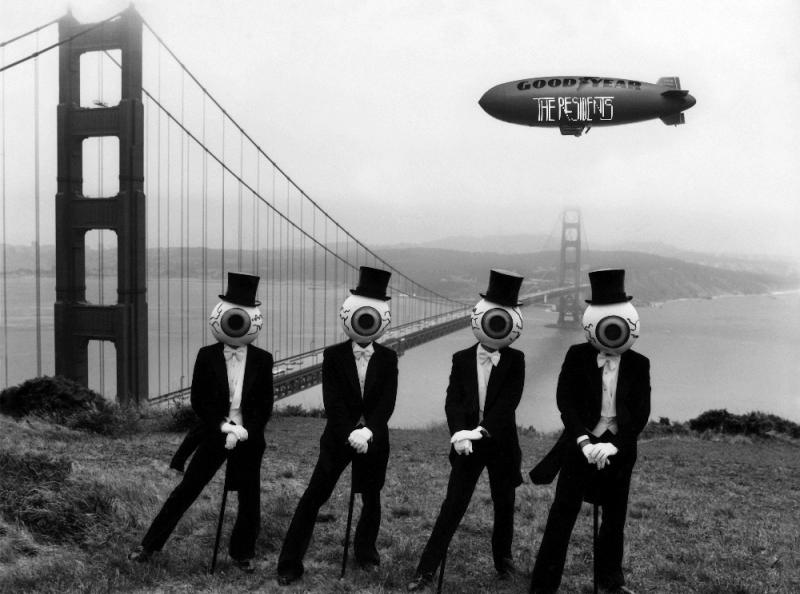
An encounter with Homer Flynn is disconcerting as the extent of his involvement in The Residents is unclear. He acknowledges that he speaks for the eyeball-headed quartet whose identities are unknown. As he talks, it's clear he has intimate knowledge of their creative process, their motivations and what they think. He discusses them as “they”. Occasionally the word “we” is used.
The Cryptic Corporation surfaced in 1976 and, at that point, was represented by Jay Clem, Homer Flynn, Hardy Fox and John Kennedy, all Shreveport, Louisiana natives who were, they said, fans and friends of the San Francisco-based yet Louisiana-raised Residents. The natural assumption is that The Cryptic Corporation's foursome were The Residents. In that case, Flynn would be a Resident. He is credited with writing or co-writing many of their compositions.
 Bluntly asking Flynn "are you a Resident" seemed pointless as, although the evidence suggests he is, any response obviously wouldn’t answer the question. This, though, was a revelatory conversation for anyone fascinated by this important and most culty of cult bands and, indeed, for anyone interested in the history of popular music in general. (Pictured right, the original, Beatles-parodying sleeve of The Residents 1974 debut album Meet the Residents)
Bluntly asking Flynn "are you a Resident" seemed pointless as, although the evidence suggests he is, any response obviously wouldn’t answer the question. This, though, was a revelatory conversation for anyone fascinated by this important and most culty of cult bands and, indeed, for anyone interested in the history of popular music in general. (Pictured right, the original, Beatles-parodying sleeve of The Residents 1974 debut album Meet the Residents)
In person, Flynn cuts a professorial dash. He could pass for an architect. He has short, side-parted hair cut in a modern, hip style and sports glasses with fashionable frames. Clean-shaven, he looks fit and trim and seems in his late sixties or early seventies. He takes sugar in his cappuccino.
Flynn was in London earlier this week, a few days before The Residents begin a month-long European tour (due to a cancellation, they are not playing the UK). He’s surprisingly comfortable talking about them and is prepared to discuss – his accent is that of America’s southern states – any aspect of the band’s five-decades of wilful musical outsider art. It's an art in which The Residents' image is not limited to their eyeball heads. Although that's their most familiar guise, the pictures here are a reminder they've adopted many other looks.
The tour is one facet of what’s proving to be a purple patch for The Residents. Their train-wreck themed album The Ghost of Hope was released earlier this year. A career-spanning box set, 80 Aching Orphans, has just been issued. A new album, Intruders, has been announced for next year and Flynn says that The Residents’ album to follow that is already being planned – it’s going to draw from blues music. A taste of it will be revealed throughout the tour, when a film of The Residents’ take on Richard Nixon singing the blues will be screened during performances.
What remains after meeting Flynn is the inescapable feeling that this friendly yet measured man actually is one of The Residents – or is The Residents. While there’s no certainty about that, the wide-ranging conversation revealed more about the band and how they work than I expected. To bowdlerise the title of their timeless 1974 debut album Meet the Residents, I (probably) met a Resident.
KIERON TYLER: What is The Cryptic Corporation? What does it do?
HOMER FLYNN: The Cryptic Corporation is the business and promotional interface for The Residents. The Residents historically are free spirits and to exist as free spirits they need some sort of protection, some sort of blanket that deals with the real world, and allows what’s appropriate to filter in from there. Ultimately that’s my job, and that’s why I’m here.
What is your specific role?
Traditionally, I’ve been the person in charge of The Residents’ visual imagery. I trained as a graphics artists and I’ve done the majority of the album covers. I do the promotional photos. I have done or art directed most of the videos.
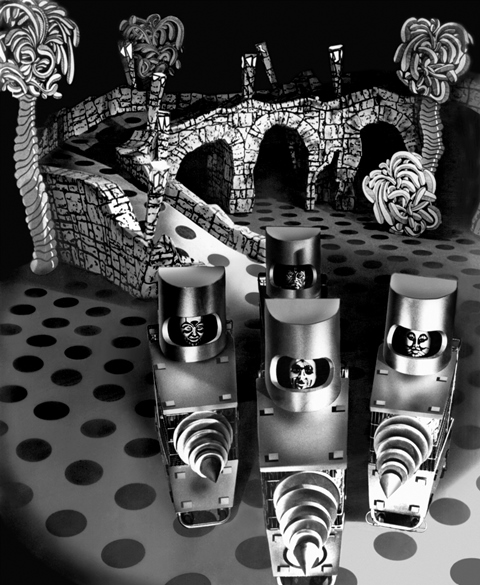 Does that go back to the beginning, before The Cryptic Corporation?
Does that go back to the beginning, before The Cryptic Corporation?
It does, to some extent – on a consulting basis. (Pictured left, The Residents in their atomic shopping carts, 1974)
Do you speak for The Residents?
Well, yes. Somebody has to speak for them or these things [interviews] don’t happen. I’ve done this long enough that I kind of know what’s acceptable or appropriate and what’s not. If something is not and they find out, we talk about it.
Can you talk about the creative process that led to The Ghost of Hope, how they came to the decision to make an album about train wrecks, and the research?
One of them has an interest, almost a life-long fetish, in trains and because of this there was a lot of talk, going back a couple of decades, about doing an album about trains. But you can’t just do an album about trains, you need some kind of hook and there was a point three, four years ago when somebody brought up the idea of train wrecks. It was "Oh, that could be interesting." Then, part of the creative process with a lot these projects is research. Somebody checks Amazon – people don’t go to libraries so much any more – they start doing Google searches and one of things that popped up was a book titled Death by Train. It wasn’t actually a book per se, as much as a Kindle download that was a collection of newspaper articles. It was 50 or 60 newspaper articles form the late 1800s, the early 1900s. They picked out 10 or 12 of these incidents they found most compelling. From a narrative point of view, that became the basis for the majority of the pieces. One called “The Crash at Crush” was a guy from Texas who worked for a train company who wanted to do a massive PR stunt. He took two ageing locomotives, built a special piece of track, put them on it, 20,000 people showed up and crashed them into each other. Two or three people were killed. That was legendary in the south in the States. They already knew about that and that became one of the pieces.
The Ghost of Hope balances the horrific with things that are a little funny, like “Train vs. Elephant”. Are you all aware of that melding of the grotesque and the humorous, which is part of The Residents’ character?
Sure. That’s a strong component of the Residents’ aesthetic. Early on, The Residents were almost labelled as the modern Spike Jones, a comedy band like the Bonzo Dog Doo-Dah Band which they didn’t like. They didn’t mind that the fact that people found humour in it, but they didn’t like being categorised as comedy. For them, there’s a strong belief that artworks of any depth should touch on a wide range of emotions. Humour is certainly one. Drama is one. Horror is one.
 Can The Ghost of Hope be taken as a metaphor? A metaphor for anything current?
Can The Ghost of Hope be taken as a metaphor? A metaphor for anything current?
There’s certainly been conversations that it’s a metaphor for technology out of control. That’s one thing that came out of The Residents’ research of trains of that era. Around that time, train travel was seen as fairly dangerous, women and children for the most part didn’t ride trains. The whole idea was that the use of trains was growing so much faster than the infrastructure that supported it.
You mentioned technology, and The Residents have always embraced new technology, visually and musically. In 1981, they were amongst the first to have bought the earliest commercially available sampling keyboard The Emulator – serial number 005, Stevie Wonder had 001 – why did they choose to do that, and did it change the music?
Probably more than anything for The Residents it enabled live performance on the level they wanted to do it.
The Mole Show, the first full staging and tour, followed quite quickly in 1982.
Exactly. They had developed this sound which depended entirely on the studio. They had embraced multi-track recording and couldn’t play. So in order to create something that had the depth and complexity they wanted, they had to do that with multi-track recording. But as they couldn’t play, there was no way they could create an adequate representation of their music from a live point of view. The sampling keyboard changed the capabilities of what was available to them. All of a sudden, they could use their limited skill to play something that sounded like real violins or real trumpets. Up to that point they couldn’t do that.
The Residents had their own studio and the Emulator must have been expensive. How was it all paid for?
They had been selling pretty well. Eskimo [released in 1979] shipped 10,000 copies and sold 20,000 within a year or two. It wasn’t going out through a major label that was taking 80% of the money. This was stuff we were manufacturing, distributing and warehousing. It wasn’t hugely profitable but it was profitable enough to buy a $5,000 Emulator which was a lot of money at that time.
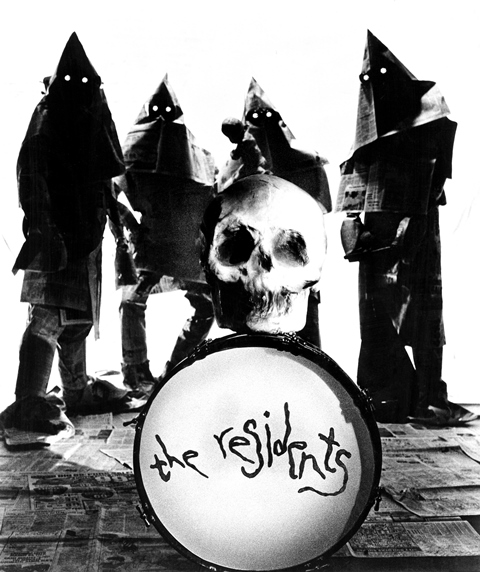 Later, The Residents had a dance with a major label – with Korova in the UK, which was part of WEA. Was there any pressure from the major side to do anything their way?
Later, The Residents had a dance with a major label – with Korova in the UK, which was part of WEA. Was there any pressure from the major side to do anything their way?
No, there was never any pressure to change who or what The Residents were. These were licensing situations where they took the product as it was and did what they could with it. (Pictured left, The Residents in 1976)
Was it the same with Mute around 10 years ago?
Yes.
That leads into an idea of control. Are They Residents control freaks? Do they have to do it their way?
There has been a component of that. Any time you have a group, you have different values at work and I think there has been a tension at times between the control aspect and the "let’s jump in and make shit happen" aspect. A lot of times there has been a creative tension. But there has been a control freak aspect at times.
Did anyone think it would go on this long, more than 45 years – The Residents began recording in 1970 and issued their first record in 1972.
When one is in their twenties they start to do something, they then think they’ll make it to their sixties, seventies or eighties but they don’t think about what they might be doing at that point. When The Residents started there was certainly an attitude of doing this as long as it worked.
Can you pinpoint a moment when it was confirmed that this could go on as long as you wanted?
I can think of a general time. In personal terms, I moved to San Francisco from Louisiana when I was in my mid-twenties, and there was always a part of me where it was, "If this California stuff doesn’t work out, I can go back and stay with mum and dad for a while." There a was point 10 or 15 years later when I could give that up: "I’m not going to have to go back to Louisiana with my tail between my legs."
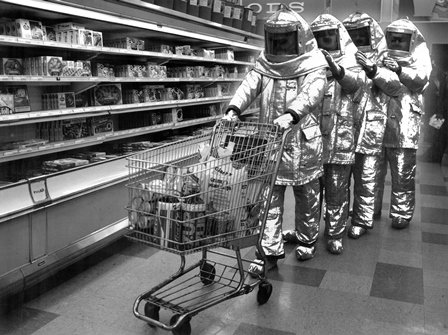 Why San Francisco? Was it chasing the hippie dream?
Why San Francisco? Was it chasing the hippie dream?
They were very influenced by hippie culture. They were pot smokers, they took acid. It was an anything-goes culture and that was attractive. They were getting out of the South. The time they left was George Wallace [the conservative governor of Alabama] time – the original Trump, though George Wallace had values. Whether you agreed with him or not, you knew what they were.
The thing about the psychedelic era was that it was extremely eclectic and it was that eclecticism that attracted The Residents and allows you to be able to connect them with that era. There was a group, not from San Francisco, called The United States of America and they stand comparison with The Residents as much as anybody that I can think of. You’re looking at an era when things were wide open and that was the door The Residents charged though. Not that anything was specifically appealing, more of a general attitude. They were also big Sun Ra fans. Things went from fairly straight to wide-open craziness. That’s when Fellini did 8½, when Stan Lee created all the interesting Marvel comics. It was a very interesting time and The Residents were attracted to that openness. (Pictured above, The Residents go shopping, 1978)
What do you say to the idea of The Residents as a form of Americana?
To me, there’s a lot of Southern Gothic in The Residents – tempered by a California sensibility.
Does that feed into the fearlessness with subject matter? Tweedles (released in 2006) is pretty full-on – the subject is a sexual deviant, a predatory sexual deviant. It’s tough. It’s creepy. Hardly anyone would touch a subject like that. Where does that come from?
It’s one of the most overlooked albums from recent times. It is creepy. Where does that come from? I’m not sure if I know.
 What about Animal Lover (issued in 2005)? That’s also odd, an album about how animals see human behaviour. The aspect of observing from the outside seems quite Residential.
What about Animal Lover (issued in 2005)? That’s also odd, an album about how animals see human behaviour. The aspect of observing from the outside seems quite Residential.
That grew out of – in the same way The Ghost of Hope grew out of an interest, and the idea of train wrecks was a way of bringing that interest out – an interest in obsession and mass hysteria, what people are capable of believing, particularly in groups. To me, it’s an endlessly fascinating subject. They started researching movements of mass hysteria and taking that subject matter and filtering it through the idea of dumbfounded animals watching this stuff happen. (Pictured left, The Residents celebrate Xmas, 1978)
I was wondering if Wormwood: Curious Stories From the Bible (issued in 1998), which takes the written word as its basis – from the Bible – is a stylistic parallel with The Ghost of Hope, which also draws from the written word?
To me, the parallel to The Ghost of Hope is Eskimo. The whole idea with Eskimo was to create something based on sound with music being one the sounds within the landscape they were creating. They wanted to go back to that aesthetic – of using Eskimo as a jumping-off point, "what’s the next album we could create [to follow-up Eskimo]?" And, in a way, that’s The Ghost of Hope.
What is the limit of The Residents’ ambition?
I don’t know that there are any limits on ambition. There are limits to the ability to realise one’s ambitions. But those are two different things. Ambition is a vast golden orb off in the distance. But there are resources which allow one to realise one’s ambitions and allow them to become concrete.
One of those resources is the internet. With The Bunny Boy (issued in 2008), the series of related films were put on the internet after the album was released. Did the idea for those come after the album was completed, or was it all conceived together, of a piece?
They were conceived of pretty much together. The whole idea of Bunny and his search for his long-lost brother, that was the fuel for both and that was there in the beginning.
 I saw a Bunny Boy live show in France, in a 2,000, 3,000-person hall and it was intense. There was a lot of screaming and shouting on stage. At first, the hall was pretty full. Then about half-an-hour in, I looked around and there were about 200 or 300 people left. Do The Residents ever think about the effect they have on their audience?
I saw a Bunny Boy live show in France, in a 2,000, 3,000-person hall and it was intense. There was a lot of screaming and shouting on stage. At first, the hall was pretty full. Then about half-an-hour in, I looked around and there were about 200 or 300 people left. Do The Residents ever think about the effect they have on their audience?
Yes and no. It depends on how compelled they are by a particular project. The more compelled they are, they more they feel it has to find its outlet. I’ve heard mixed things about what people thought about the Bunny Boy show. Part of the Residents’ aesthetic is to bring a theatricality to their shows and ultimately that was a show that was very dependent on theatricality. But there were a lot of people that weren’t prepared to accept that in a concert context, and I understand that. But The Residents feel a certain obligation to challenge their audiences. (Pictured above right, The Residents at Mount Rushmore, 1982)
Do The Residents know who their audience is?
Historically, The Residents’ fan was the most alienated person you could find in some small town. I think that’s changed over the years and it’s been gratifying to see how many people show up at Residents’ shows these days. You wonder, "How did they get to hear about this? Why are they here?" The audience continues to change. It’s never been a mass audience but that’s not really a problem.
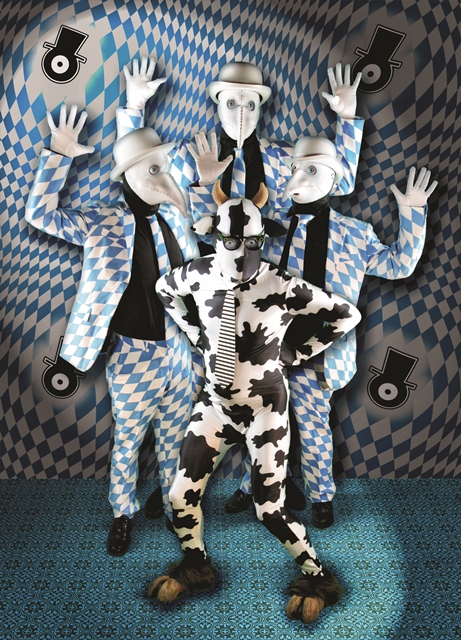 Can you say anything about Intruders, the next album?
Can you say anything about Intruders, the next album?
Intruders is about beings that inhabit our psyche in ways that we can’t control and are often unwanted. That’s not necessarily a bad thing, or a good thing either. For instance, when I was 13 years old I was riding my bicycle home from school one day and I passed a parking lot of church and I saw this guy with his head down, trudging along. He was overweight, unattractive, had pimples on his face and was wearing a leather jacket, a motorcycle jacket. I had this vision of this person – whether there’s any reality in this, I have no idea – which stayed with me for long time, this impression of a social outcast that was desperately trying to connect with his culture though the black leather jacket. He became an unwanted presence in my mind. You could say the same thing about the break-up of a romantic relationship. You know why it didn’t work, but still the vision or feeling of that person haunts you. The whole idea of Intruders is that we’re visiting characters who are being visited by these unwanted presences. (Pictured left, The Residents posing in their most-recent promotional photo session)
Looking back to 1976, what was the reaction from The Residents – or anyone else who was there – to the first playback of their mangled version of The Rolling Stones’ “Satisfaction” after it was recorded?
I recall from that era the music critic in the San Francisco Chronicle calling it the most determinedly repellent music ever recorded. A bar in Berkeley used it as a way of clearing the house when they shut down each evening. This was pre-punk and in some ways “Satisfaction” created a kind of template, but there was no template for recording it. At the time, I thought that it was a little too long [laughs] and that "this is really interesting and different."
We’re living in bonkers times, what would The Residents like to say to the world?
We do live in bonkers times. Keep the faith. Relish the moment, take what you can from it. That’s both a positive and a negative statement.
Share this article
Add comment
The future of Arts Journalism
You can stop theartsdesk.com closing!
We urgently need financing to survive. Our fundraising drive has thus far raised £49,000 but we need to reach £100,000 or we will be forced to close. Please contribute here: https://gofund.me/c3f6033d
And if you can forward this information to anyone who might assist, we’d be grateful.

Subscribe to theartsdesk.com
Thank you for continuing to read our work on theartsdesk.com. For unlimited access to every article in its entirety, including our archive of more than 15,000 pieces, we're asking for £5 per month or £40 per year. We feel it's a very good deal, and hope you do too.
To take a subscription now simply click here.
And if you're looking for that extra gift for a friend or family member, why not treat them to a theartsdesk.com gift subscription?
more New music
 Solar Eyes, Hare & Hounds, Birmingham review - local lads lay down some new tunes for a home crowd
Psychedelic indie dance music marinated in swirling dry ice
Solar Eyes, Hare & Hounds, Birmingham review - local lads lay down some new tunes for a home crowd
Psychedelic indie dance music marinated in swirling dry ice
 The Lemonheads' 'Love Chant' is a fine return to form
Evan Dando finally gets back in the saddle with an album of new tunes
The Lemonheads' 'Love Chant' is a fine return to form
Evan Dando finally gets back in the saddle with an album of new tunes
 Music Reissues Weekly: Evie Sands - I Can’t Let Go
Diligent, treasure-packed tribute to one of Sixties’ America’s great vocal stylists
Music Reissues Weekly: Evie Sands - I Can’t Let Go
Diligent, treasure-packed tribute to one of Sixties’ America’s great vocal stylists
 'Deadbeat': Tame Impala's downbeat rave-inspired latest
Fifth album from Australian project grooves but falls flat
'Deadbeat': Tame Impala's downbeat rave-inspired latest
Fifth album from Australian project grooves but falls flat
 Heartbreak and soaring beauty on Chrissie Hynde & Pals' Duets Special
The great Pretender at her most romantic and on the form of her life
Heartbreak and soaring beauty on Chrissie Hynde & Pals' Duets Special
The great Pretender at her most romantic and on the form of her life
 The Last Dinner Party's 'From the Pyre' is as enjoyable as it is over-the-top
Musically sophisticated five-piece ramp up the excesses but remain contagiously pop
The Last Dinner Party's 'From the Pyre' is as enjoyable as it is over-the-top
Musically sophisticated five-piece ramp up the excesses but remain contagiously pop
 Moroccan Gnawa comes to Manhattan with 'Saha Gnawa'
Trance and tradition meet Afrofuturism in Manhattan
Moroccan Gnawa comes to Manhattan with 'Saha Gnawa'
Trance and tradition meet Afrofuturism in Manhattan
 Soulwax’s 'All Systems Are Lying' lays down some tasty yet gritty electro-pop
Belgian dancefloor veterans return to the fray with a dark, pop-orientated sound
Soulwax’s 'All Systems Are Lying' lays down some tasty yet gritty electro-pop
Belgian dancefloor veterans return to the fray with a dark, pop-orientated sound
 Music Reissues Weekly: Marc and the Mambas - Three Black Nights Of Little Black Bites
When Marc Almond took time out from Soft Cell
Music Reissues Weekly: Marc and the Mambas - Three Black Nights Of Little Black Bites
When Marc Almond took time out from Soft Cell
 Album: Mobb Deep - Infinite
A solid tribute to a legendary history
Album: Mobb Deep - Infinite
A solid tribute to a legendary history
 Album: Boz Scaggs - Detour
Smooth and soulful standards from an old pro
Album: Boz Scaggs - Detour
Smooth and soulful standards from an old pro
 Emily A. Sprague realises a Japanese dream on 'Cloud Time'
A set of live improvisations that drift in and out of real beauty
Emily A. Sprague realises a Japanese dream on 'Cloud Time'
A set of live improvisations that drift in and out of real beauty

Comments
What a great interview, thank